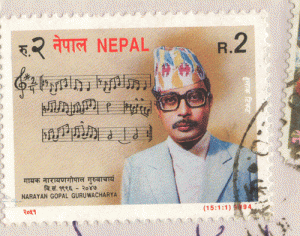Three Latin-American Dances

[from Naxos CD liner notes:] In his Two Latin-American Dances, Kulp attempts to recreate the effect of a typical Afro-Caribbean dance band, with its improvisatory melodies and dense polyrhythmic textures. The Danza Dominicana is based on rhythms from the merengue, a fast duple-meter dance of the Dominican Republic. The most prominent rhythmic pattern is that played by the tambora (a double-headed drum), which Kulp weaves into both the melodies and the recurring accompanimental figure. In the Danza Cubana, the primary rhythmic patterns are derived from the son montuno, an Afro-Cuban song and dance genre from the 1920’s-1940’s. Most typical is the syncopated rhythm of the clave (a Cuban clapper instrument consisting of two hardwood cylinders) which is always present in the texture at some level. The Danza Dominicana (1996) and Danza Cubana (1997), as well as Danza Cubana no. 2 are written for and dedicated to Steve Kostelnik.
These three pieces are published by Les Productions D’Oz as Three Latin-American Dances.
Danza Cubana no. 3
D’Oz has also published my Danza Cubana no. 3, which was written for guitarist Matthew Hinsley of Austin, Texas, who wanted a study in “speed bursts” that he could use with his intermediate and advanced students. The piece is meant to give practice playing brief, rapid scales in the context of a fun and groovy piece of music based on Cuban rhythms.
Danza Cubana no. 4
The Danza Cubana no. 4 (also arranged for other media as Danza Lenta) is based on the rhythms of the Cuban son, a genre of Cuban popular music dating back to the 1920s. Cuban popular music of this era often has strong African influences, and in the son one can hear the African influence as a layering of several distinct rhythmic ostinati with the clave rhythm at the foundation. The most prominent feature of Danza Cubana no. 4 is the use of an ostinato figure against which there are melodies in the bass and upper voices. The melodies themselves have a rhythmic profile based primarily on the clave rhythmic pattern. This is meant to be one of the slower types of son, with an easy laid-back groove. This piece has been arranged for two guitars, marimba (two players), piano four-hands, and full orchestra. Please inquire for scores of these various arrangements.
Elegy and Fugue
I first got the idea for Elegy and Fugue when a friend of mine serving in the peace corps sent me a package from Nepal with a very interesting postage stamp on it. Nepali stamps are quite beautiful in general, but this particular stamp caught my eye more than any other because it had a melody printed on it in tiny musical notation.

Using a magnifying glass, I took the melody down on staff paper and played through it several times. I was so taken by its simplicity and beauty that I decided to file it away for future use. About a year later when I was thinking about writing a piece for the Guitar Foundation of America‘s 1996 set piece competition, I remembered the little Nepali melody and thought this would be the perfect opportunity to use it. The first movement, “Elegy,” features a chromaticised version of the original melody followed by a short improvisatory passage of bell-like motives. The subject of the ensuing fugue is a more remote transformation of the Nepali melody. The climax of the fugue is a presentation of the subject in augmentation, and the Nepali melody finally appears in its original form (although now harmonized) shortly thereafter in a sort of reprise of the Elegy. Elegy and Fugue is dedicated to Lori Schell, who sent me the melody that inspired the piece. The work was first performed by Randall Goldberg at the New England Conservatory (Boston) in 1997.
Jonathan Kulp, 2003
Score available at Les Productions D’Oz
Etudes
Études no. 1-2 (for solo guitar). Quebec, Canada: Les Productions d’Oz 2000, Inc., 2003. (Catalog no. DZ 649)